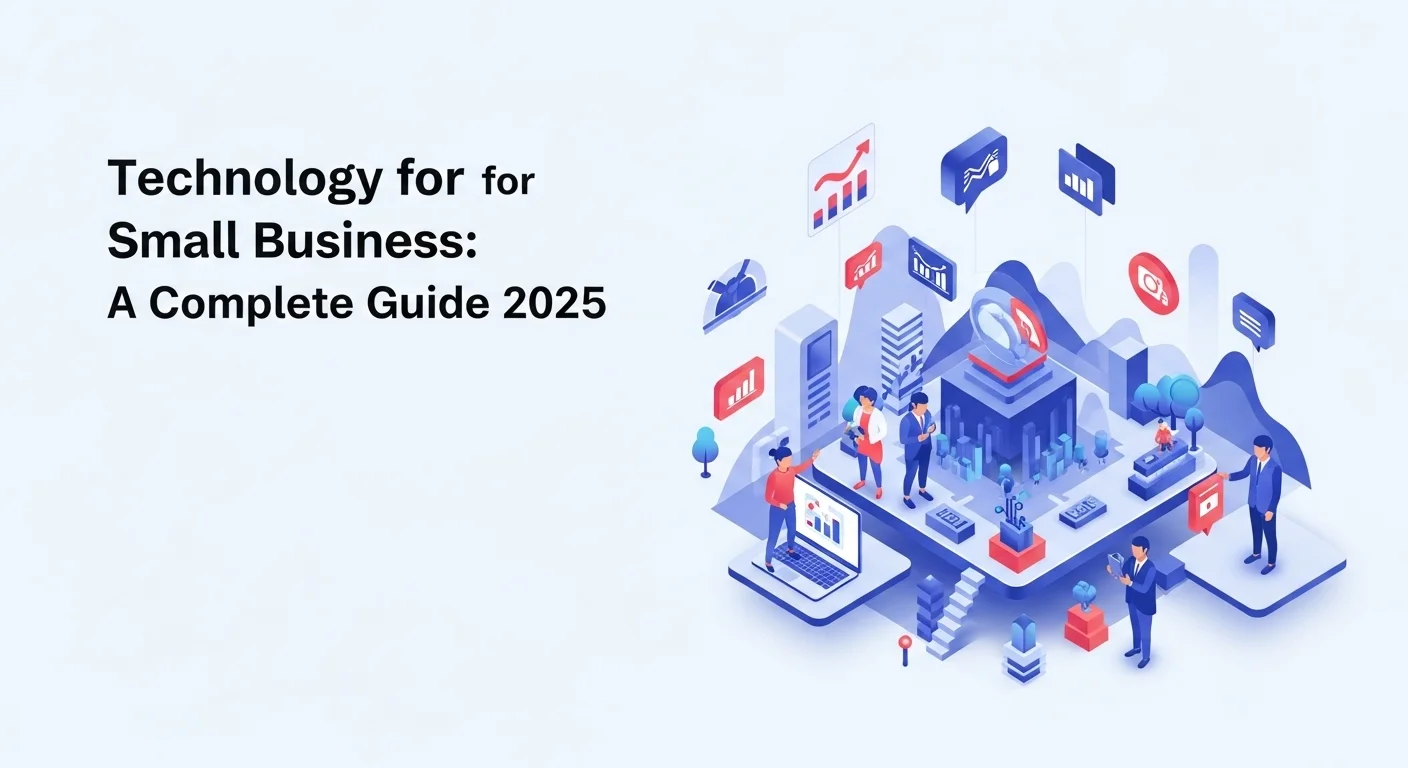From Idea to Impact: Your Guide to Today's Hottest Tech Business Ventures

Executive Summary
In all my years as an entrepreneur and mentor, I've seen one thing hold true: the best businesses start with a simple idea that solves a real problem. Today, technology has leveled the playing field. You don't need a huge investment or a fancy office to build something incredible. This isn't just theory; it's the reality for thousands of successful founders. In this guide, I'm going to cut through the noise and share practical, road-tested business concepts. We'll look at opportunities perfect for solo founders, empowering ideas for female entrepreneurs, and easy-to-start ventures that won't break the bank. My goal is simple: to give you the map you need to navigate the tech world, find your niche, and turn that spark of an idea into a sustainable business. Let's build something great.
Table of Contents
Table of Contents
Why Your 'Simple Idea' is the New Gold in Tech
Let's be honest, in the world of technology, an 'idea' isn't just a random thought that pops into your head. It’s the very first sketch of a solution to a real-world problem. It might be a new service that makes someone's life easier or a product that just works better than anything else out there, all powered by technology. I've seen firsthand how a single, powerful idea can blossom into a game-changing company. Think about it—every piece of tech we use, from AI to the cloud, started as someone's 'what if?' idea. And now, these very technologies are making it easier than ever for anyone, anywhere, to bring their own ideas to life.
The barrier to entry for starting a business has crumbled. I remember when launching a company meant securing massive loans for office space and equipment. Today, all you truly need is a laptop, a decent internet connection, and a solid concept. This shift has opened the doors for so many brilliant people who were previously locked out. Cloud computing gives you massive server power for the price of a few coffees. Open-source software provides tools that used to cost a fortune. And with digital marketing, you can reach your perfect customer without a Super Bowl-sized budget. This is the new landscape—a fertile ground for anyone with the drive to build something meaningful. The key is to find your corner of the market, truly understand who you're helping, and use the right tech to make it happen. Let’s dive into some areas where I see incredible potential right now.
Building a One-Person Powerhouse: Ideas for Solopreneurs
The rise of the 'solopreneur' is something I find incredibly exciting. These are the individuals who single-handedly build and run their own businesses, and they're able to do it because of technology. The best paths for going it alone often involve leveraging a unique skill you can deliver online. For example, I know a cybersecurity pro who started her own consultancy from her living room. She uses cloud-based tools to run security audits for small businesses all over the country, no office required. Another booming field is AI consulting. So many businesses are desperate to use AI but have no idea where to start. A one-person shop can offer strategic advice or even build custom AI chatbots. And don't forget tech gadget reviewers. I've seen people build entire careers by creating YouTube channels or blogs reviewing the latest tech, earning money from ads and affiliate links. The secret for a successful one-person venture is to specialize in something you're passionate about and use tech to amplify your voice and automate the busywork.
Leading the Way: Empowering Tech Ventures for Women
Technology has been a true game-changer for female entrepreneurs, offering the flexibility needed to chase ambitious goals while managing life's other demands. I've been inspired by so many women-led ventures that are not only profitable but also build strong communities. A fantastic example is creating a curated e-commerce site for handmade or sustainable goods. Using a platform like Shopify and marketing through Instagram, a founder can support fellow female artisans while building a powerful brand from home. Another area with huge impact is creating online learning hubs or communities for women in specific industries, like tech or finance. These platforms offer mentorship, networking, and skills training, directly tackling the gender gap. I've also seen a huge demand for virtual assistant (VA) services that specialize in supporting tech startups. A savvy entrepreneur can build a team of VAs, managing everything from social media to admin tasks using cloud-based project tools. These ventures show how technology can be a force for creating flexible, scalable, and deeply meaningful businesses.
Your First Step: Easy Self-Employment Ideas
If you're looking to dip your toes into the entrepreneurial waters without taking a huge risk, technology offers plenty of low-stakes options. These are ventures you can start on the side and grow at your own pace. Social media management is a perfect example. Countless small businesses are overwhelmed by social media. You can step in and offer to create their content and manage their accounts using simple tools like Buffer or Hootsuite for a monthly fee. Content creation itself is another great path. If you have knowledge to share, starting a blog or a podcast on a niche topic costs next to nothing. With a simple WordPress site and a basic microphone, you can build an audience and monetize your content. Another popular model I've seen work well is dropshipping. You can set up an online store selling products like tech gadgets or smart home devices, but you never have to handle the inventory or shipping yourself. This is a fantastic way to learn the ropes of e-commerce without a big upfront investment.
Modernizing Main Street: Tech for Small-Scale Industries
In many economies, small-scale industries ('Laghu Udyog') are the unsung heroes. I believe technology holds the key to unlocking their next level of growth. The most exciting ideas I'm seeing involve weaving modern tech into traditional businesses. Imagine a small clothing maker implementing a simple, cloud-based system to track inventory and orders. This one change can provide real-time data that cuts waste and boosts profits. Another powerful concept is a B2B e-commerce platform connecting local artisans directly with buyers, removing the middlemen and increasing their earnings. I'm also fascinated by how 3D printing can help these small manufacturers create prototypes or custom parts affordably. Even simple IoT sensors on old machinery can predict when a part might fail, preventing costly downtime. These aren't futuristic dreams; they are practical applications of technology that can supercharge productivity and open up global markets for small, local businesses.
Launch Lean: Innovative Low-Budget Shop Ideas
The dream of opening your own shop is more accessible than ever, thanks to technology. You no longer need a physical storefront and a warehouse full of inventory. The best low-budget ideas today are digital. I always advise new entrepreneurs to start with a niche e-commerce store. Instead of trying to be the next Amazon, focus on a very specific audience, like selling sustainable tech accessories or retro gaming gear. By using a dropshipping or print-on-demand model, your initial cost is virtually zero. Another brilliant, low-budget idea is a digital product shop. You can create and sell e-books, online courses, or software templates. The beauty of digital products is that you create them once and can sell them infinitely with no extra cost. Platforms like Gumroad make this incredibly easy to set up. Finally, you can 'set up shop' as a service provider on platforms like Upwork or Fiverr, offering skills like graphic design or content writing. This requires no financial investment at all—just your time and talent. These digital-first approaches make entrepreneurship a reality for anyone with a great idea and a bit of hustle.

The Founder's Playbook: Turning Your Idea into a Real Business
Okay, so you have an idea. That's fantastic. But an idea, by itself, is just the start of the race. I've seen too many passionate founders stumble because they didn't have a clear plan to turn that spark into a sustainable business. This is where a structured approach comes in. It's about knowing how to test your concept, what tools to use, and where to find the right resources. This section is my personal playbook for taking a raw concept and shaping it into a market-ready venture, even if you're starting with a shoestring budget. It's a journey, and like any journey, having a map makes all the difference.
The old way of doing things—spending months writing a massive business plan based on pure guesswork—is dead. Today's successful entrepreneurs are agile, they're data-driven, and they listen to their customers. We're going to talk about how to quickly figure out if you're building something people will actually pay for. We'll cover smart ways to generate ideas by spotting problems and trends, and then I'll show you how to validate those ideas without wasting time or money. Finally, I’ll point you to the amazing ecosystem of tools, from cloud platforms to no-code builders, that put the power of a giant corporation right at your fingertips. This is your guide to navigating the exciting, challenging, and ultimately rewarding path of a tech founder.
Finding Your Million-Dollar Idea (Without a Million Dollars)
Great business ideas rarely fall from the sky. They come from paying attention. One of my favorite methods is what I call **Problem-Led Ideation**. Simply look for things that are inefficient, frustrating, or just plain broken in a specific industry or in everyday life. For instance, you might notice that local plumbers and electricians are still using paper and pencil for scheduling and billing. Boom—that's an idea for a simple, mobile-first app that solves their headache. Another powerful technique is **Trend Analysis**. I use tools like Google Trends or just keep an eye on publications like TechCrunch to see what's gaining momentum. A rising interest in remote work could spark an idea for a platform that connects companies with vetted virtual assistants. A third method, especially for those with some tech skills, is **API-First Ideation**. Companies like OpenAI (for AI) and Stripe (for payments) offer building blocks (APIs) that let you create powerful apps by snapping them together. You could combine these to create a sophisticated customer service bot for small online stores. Once you have a few concepts, it's crucial to refine them. I always recommend grabbing a whiteboard, mind-mapping, or filling out a Business Model Canvas to give your idea structure and turn it from a fuzzy thought into a concrete plan.
Don't Just Build It: How to Prove People Will Actually Buy It
This is the most critical step, and the one most people skip. An idea is just a guess until you prove someone wants it. The best framework for this is the **Lean Startup Methodology**. It’s all about a simple loop: Build-Measure-Learn. But 'Build' doesn't mean creating the entire product. You start with a **Minimum Viable Product (MVP)**. Your MVP is the most basic version of your product that solves the core problem for your first users. For many service-based ideas, an MVP can be as simple as a landing page explaining what you do and a button to collect email addresses. If people sign up, you have initial validation! **Market Research** is your other key tool here, and it doesn't have to be expensive. Use Google Forms to create free surveys, have coffee with a few potential customers, and study your competitors to see what they're doing right and wrong. For anyone planning a low-budget shop, this research is non-negotiable to make sure there's a paying audience for your niche. Once you have an MVP out in the wild, you switch to listening mode. Watch your user data, talk to your customers, and use that feedback to improve. This data-driven cycle of iteration is how you build a product that the market truly loves.
Your Secret Weapons: Cloud Power and No-Code Magic
The cost of technology is no longer an excuse. Two revolutions have completely changed the game for new entrepreneurs: cloud computing and no-code platforms. **Cloud Computing** from giants like Amazon Web Services (AWS) or Google Cloud is like renting a supercomputer for pennies. You can launch your app or website with virtually no upfront cost and only pay for the resources you actually use as you grow. This is a massive advantage, whether you're building a complex software platform or a simple inventory system for a local business. And it’s not just hosting—they provide databases, AI tools, and top-tier security that used to be out of reach for startups. Just as important are **No-Code/Low-Code Platforms**. I'm a huge fan of tools like Bubble and Webflow because they allow anyone, regardless of their technical background, to build fully functional applications. I've seen founders with brilliant ideas but no coding skills build their MVP, test it with real users, and launch their entire business using these visual tools. You could create a custom booking system or a community forum in weeks, not months. These platforms are the ultimate democratizers of technology, putting the power to create directly in your hands.
Let's Get Specific: Real-World Business Blueprints
Let's connect these principles to some concrete ideas. For a **solopreneur**, think about a 'Niche ERP Software' for a specific small business, like a craft brewery. You'd interview owners to find their pain points (validation), then use a low-code tool to build an MVP for managing inventory and production. You'd charge a simple monthly subscription. For **female entrepreneurs**, a 'Subscription Box Management Software' is a fantastic idea. Many women run these businesses on the side and struggle with the logistics. A simple tool to manage subscribers and billing, built on Bubble and marketed in female entrepreneur Facebook groups, could be a huge win. For an **easy self-employment** idea, an 'AI-Powered Resume Builder' is very current. You could use an existing AI API to create a simple web tool that helps people optimize their resumes. It's a low-cost startup with a clear monetization path. For a **small-scale industry**, a 'Hyperlocal Marketplace' app that connects local food producers or artisans with customers in their city is a powerful concept that supports the local economy. And for a **low-budget shop**, a 'Print-on-Demand' store for a niche audience is a proven model. Design merchandise for a specific community, like data scientists or rock climbers, and sell it through Shopify with a service like Printify. Zero inventory, zero risk.

Playing the Long Game: Tips for Building a Business That Lasts
Getting your tech-based business off the ground is a huge accomplishment, but it’s really just the starting line. To build a company that not only survives but thrives, you need to think strategically about growth, security, and staying relevant. This final section is about the hard-won lessons and best practices that separate fleeting successes from resilient, future-proof businesses. I'll share actionable tips on everything from adopting the right mindset to using the best tools to scale efficiently. We’ll also look at some real-world examples and peek over the horizon at the trends that will define the next wave of opportunity.
The digital world never stands still. New technologies pop up, customer expectations change overnight, and markets shift. To succeed here, you have to be a student for life—always learning, always adapting. These strategies aren't just for venture-backed startups; they are fundamental principles for any founder. Whether you're a solopreneur refining your service, a women-led team scaling your platform, or a shop owner optimizing for growth, these tips will give you a solid foundation for the long haul. Let's move beyond the launch and focus on building a strong operational framework that will support you for years to come.
Stay Ahead of the Curve: Innovation, Security, and Scale
The 'launch it and leave it' mentality is a recipe for disaster. In tech, you have to keep moving. The first step is embracing an **Agile Mindset**. This just means you work in short, iterative cycles. Instead of disappearing for six months to build a 'perfect' new feature, you release small improvements regularly. This lets you get constant feedback and ensures you're always building what your customers actually want. A non-negotiable best practice is to Build Security in from Day One. If you handle any customer data, cybersecurity isn't optional. Start with the basics: use HTTPS on your site, enforce strong password policies, and offer two-factor authentication. As you grow, investing in security audits isn't a cost—it's an investment in trust. Your customers need to know their data is safe with you. Finally, you must plan for **Scalability**. It's a great problem to have when your business takes off, but if your technology can't handle the traffic, it will crash and burn. This is why building on a cloud platform is so smart. It allows your infrastructure to grow seamlessly with your user base, preventing those dreaded 'server down' moments that can kill a young company.
My Go-To Toolbox: Essential Apps for Every Founder
As a founder, your time is your most valuable asset. The right tools can automate the grunt work and free you up to focus on what really matters. For **Project Management**, I rely on tools like Asana or Trello. They keep everything organized, track progress, and make collaboration with anyone, anywhere, a breeze. For **Customer Relationship Management (CRM)**, a tool like HubSpot is a must. It helps you keep track of all your customer interactions, manage sales leads, and run marketing campaigns. Most have fantastic free versions that are perfect for startups. For **Marketing and Analytics**, you can't live without Google Analytics. It tells you everything you need to know about your website visitors. For email, I recommend services like Mailchimp or ConvertKit to build your audience and nurture those relationships. These are absolutely critical for anyone running a digital shop. And of course, for communication, tools like Slack and Zoom are the lifeblood of modern, often remote, teams. Take the time to learn these tools; the productivity gains are immense.
Stories from the Trenches: Real-World Founder Journeys
Case Study 1: The Cybersecurity Solopreneur
Maria, a cybersecurity expert, was tired of the corporate grind. She launched a consultancy for small businesses, a perfect high-value solo venture. She started lean, building a simple WordPress site and writing blog posts about common security mistakes. This content marketing established her as an expert. She used a free HubSpot CRM to track every lead that came from her site. Instead of traveling, she used cloud-based scanning tools to perform remote security audits, delivering huge value to her clients without leaving her home office. Her low overhead and specialized skill set allowed her to build a highly profitable one-person business in under a year.
Case Study 2: The Women-Led EdTech Platform
A few female educators saw a gap in the market: there were no fun, engaging financial literacy tools for young women. This led to their big idea—an EdTech platform with gamified courses. Instead of spending a year and a fortune on developers, they built their entire MVP on Bubble, a no-code platform. This let them launch fast and get real user feedback. They marketed smartly through social media and by partnering with schools. As they grew, they used the agile approach, constantly adding new features based on what their users loved. Their venture is now not only profitable but is making a real social impact.
Case Study 3: The Modernized Family Business
Ravi took over his family's small spice manufacturing business. It was a classic local operation, run the same way for decades. Ravi saw the potential of technology. He implemented a simple, low-cost cloud inventory system that immediately cut down on waste. This is a perfect example of modernizing a traditional business. Next, he launched a Shopify store to sell their unique spice blends directly to customers across the country. By sharing his family's story through digital marketing, he built a powerful brand that connected with people. This fusion of tradition and tech turned a local gem into a national brand.
What's Next? Preparing for the Tech of Tomorrow
The only thing you can count on in tech is that everything will change. As a founder, you have to keep one eye on the future. Artificial Intelligence is going to become even more integrated into everything we do, creating incredible new opportunities for personalized services and hyper-automation. **Decentralized Technologies** like blockchain could fundamentally change how we handle transactions and data, creating new business models that are more transparent and secure. The Internet of Things (IoT) will continue to weave the digital and physical worlds together, making smart homes and smart cities the norm. To stay ahead, you have to stay curious. Dedicate a few hours a week to reading about these trends, taking an online course, or just playing with a new tool. By understanding where the world is going, you can position yourself to catch the next big wave and formulate the game-changing business ideas of tomorrow.
Expert Reviews & Testimonials
Alex Grant, IT Consultant ⭐⭐⭐⭐
I've been stuck on how to start my own business for months. The section on solopreneur ideas, especially the cybersecurity consultancy example, was a lightbulb moment. Finally, a clear, actionable plan. Thank you!
Jasmine Patel, Developer ⭐⭐⭐⭐⭐
As a woman in tech, I found the EdTech platform case study incredibly inspiring. It's refreshing to see content that focuses on empowerment and provides real tools like Bubble and no-code platforms. Great read!
Ben Carter, Student ⭐⭐⭐⭐⭐
This is the best, no-fluff guide I've read on tech businesses. David breaks down complex topics like MVPs and cloud computing into simple terms. I've already bookmarked the 'Go-To Toolbox' section. Highly recommend.



